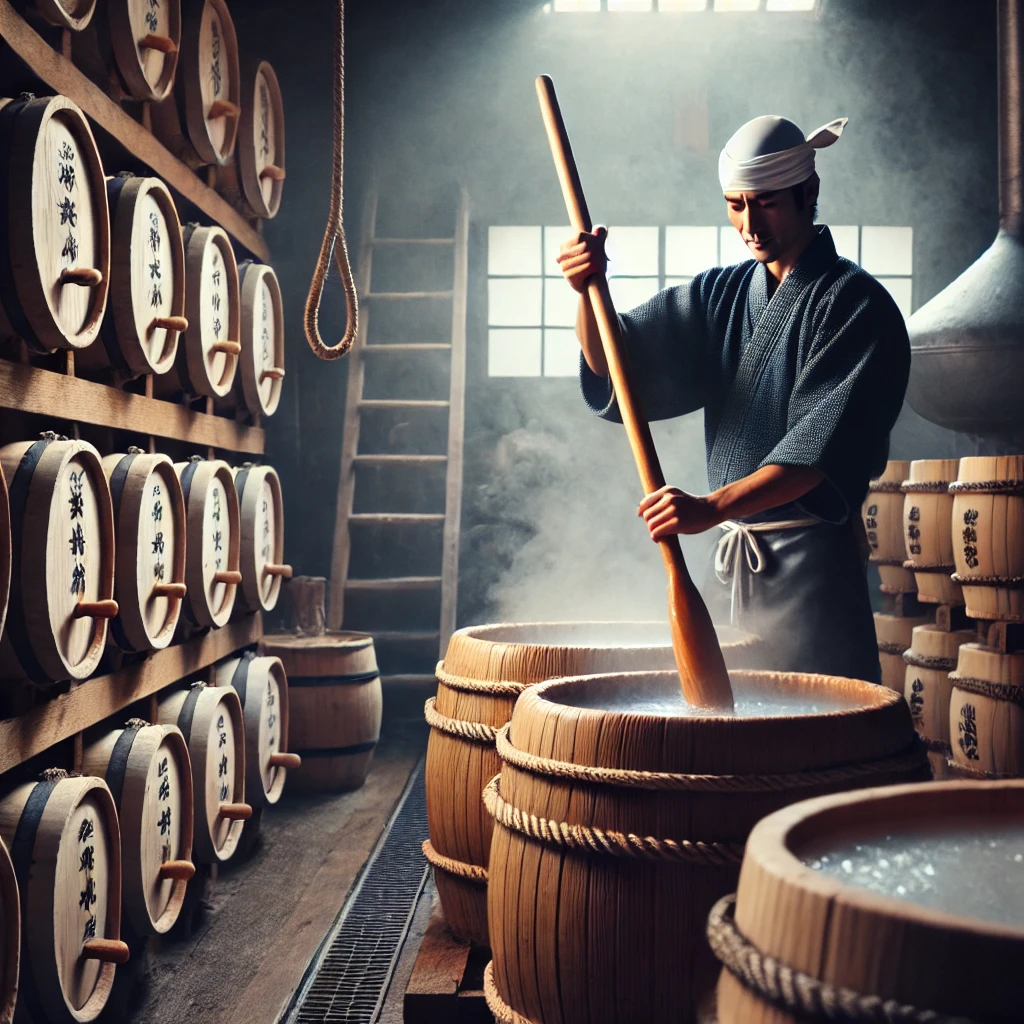Hello, this is Mana! Today, I want to share what I’ve learned about the differences between Kimoto (生酛), Yamahai (山廃), and Sokujo (速醸) yeast starters. Understanding these traditional methods will reveal the secrets behind the unique flavors of Japanese sake!
1. What is Kimoto?
Let’s start with Kimoto. This method is one of the traditional Japanese sake brewing techniques that uses natural lactic acid bacteria to create the yeast starter. Before the Meiji era, all sake was brewed using this method. Kimoto involves a labor-intensive process called Yama-oroshi (山卸し), where rice is ground and made into a paste, creating an environment where lactic acid bacteria thrive and suppress other microbes.
Sake made with Kimoto has a robust acidity and a rich, deep flavor that becomes more complex as it matures. Although only a few breweries still use this method, those that do produce sake with distinct flavors that have a dedicated following.
2. What is Yamahai?
Next is Yamahai, which is actually short for Yama-oroshi Hai-shi (山卸し廃止), meaning “abolition of Yama-oroshi”. Developed during the Meiji era at the National Institute of Brewing Studies, this method omits the Yama-oroshi process. It was found that enzymes alone were sufficient to convert rice into sugar without needing to grind it.
Like Kimoto, Yamahai uses natural lactic acid bacteria, resulting in a strong acidity. However, it is less labor-intensive and more efficient to produce. Sake brewed with Yamahai has a rich and powerful taste, often perceived as cleaner compared to Kimoto.
3. What is Sokujo?
Finally, let’s talk about Sokujo, the most common modern method for producing sake yeast starters. This method involves the addition of artificial lactic acid, allowing for quick starter creation without the need to wait for natural lactic acid bacteria. It significantly reduces both time and costs, making it popular among many breweries.
Sake made with Sokujo starters is typically light and clean-tasting, often with fruity aromas. It appeals to modern palates and is especially popular as a drink to enjoy with meals.
4. The taste differences between Kimoto, Yamahai, and Sokujo
There are clear differences in taste between the three brewing methods. Kimoto features deep umami and acidity, especially notable as it ages. Yamahai offers a similar acidity but with a cleaner finish. Sokujo, on the other hand, tends to be fruity and light, making it particularly popular among young drinkers and those new to sake.
5. The resurgence of traditional sake brewing methods
Interestingly, there has been a resurgence in the popularity of traditional methods like Kimoto and Yamahai. Breweries are increasingly returning to these labor-intensive techniques to create unique-flavored sake. For example, some use old-fashioned wooden barrels and prioritize natural fermentation. This revival is largely driven by consumers’ desire for distinctive flavors.
These traditional brewing techniques not only enrich the flavor of sake as it ages but also continue to evolve, enriching the heritage of sake brewing even today.
Summary
Did you understand the differences between Kimoto, Yamahai, and Sokujo? Each method has its own charm, and the depth of sake can be appreciated anew with every sip. Next time you choose a sake, remember these differences and find your favorite one!



コメント